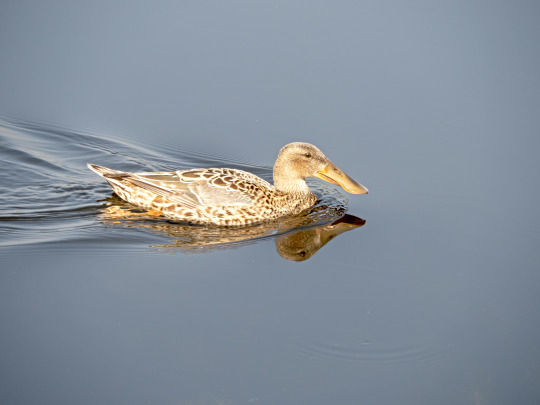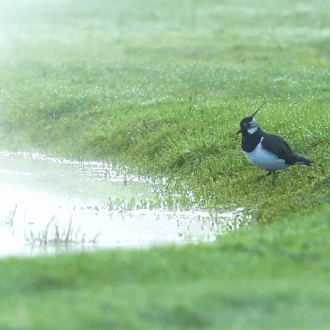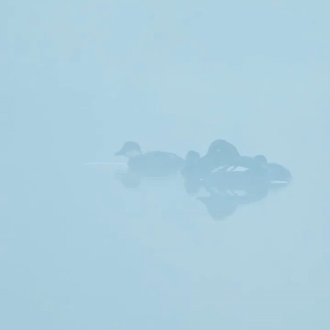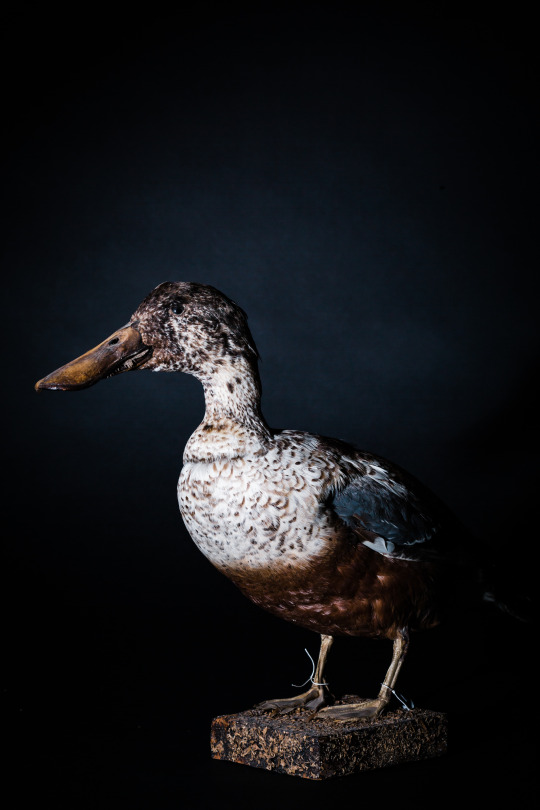#Anas clypeata
Explore tagged Tumblr posts
Text

Feeding Shoveler
A shoveler duck feeding on the autumn coloured water of Elney Lake, at RSPB Fen Drayton Lakes.
#anas clypeata#animal#animals#autumn#bird#birds#cambridgeshire#canon#canonuk#duck#ducks#fauna#fen drayton#fen drayton lakes#lake#nature#nature reserve#northern shoveler#outdoors#reflection#reflections#ripples#rspb#shoveler#water#wildlife
11 notes
·
View notes
Text
Ladies, if he:
-is instantly recognizable in profile even far away
-has a piercing eye in a friendly face
-dresses dapperly in season yet is not ashamed to be seen when schlubby
-primarily filter-feeds but will opportunistically snack on seeds and invertebrates with his big spatulate bill
He’s not your man. He’s a Northern Shoveler

#northern shoveler#birdwatching#waterfowl#ducks#basic birds for beginner birders#Anas clypeata#reposted from my mastodon#because the bird nerds loved it#he’s not your man#meme#bird photography#birdlovers#nature shitposts are called spoorposts
5 notes
·
View notes
Text

Female shoveler duck (Anas clypeata)
46 notes
·
View notes
Note
Search Britannica
Search Britannica...
Ask the ChatbotGames & QuizzesHistory & SocietyScience & TechBiographiesAnimals & NatureGeography & TravelArts & CultureProConMoneyVideos
Science
Birds, Reptiles & Other Vertebrates
Birds
Common, or northern, pintail (Anas acuta).
duck
bird
Written and fact-checked by
Last Updated: Dec 11, 2024 • Article History
Related Topics: dabbling duck whistling duck perching duck diving duck Anatinae
On the Web: University of Wisconsin-Madison - Livestock Division of Extension - The Origin of Ducks (Dec. 11, 2024)
News • Rangers trade captain Jacob Trouba to Ducks, shed full $8 million salary • Dec. 6, 2024, 9:11 PM ET (USA Today)
duck, any of various species of relatively small, short-necked, large-billed waterfowl. In true ducks—i.e., those classified in the subfamily Anatinae in the waterfowl family Anatidae—the legs are placed rearward, as in swans, rather than forward, as in geese. The result is a distinctive waddling gait. Most true ducks, including a few inaccurately called geese (e.g., sheldgeese) by reason of size and build, also differ from swans and true geese in the following characteristics: males (drakes) and females (hens or ducks) exhibit some degree of differentiation in plumage and in call, males molt twice annually, females lay large clutches of smooth-shelled rather than rough-shelled eggs, and both sexes have overlapping scales on the skin of the leg. The wild mallard (Anas platyrhynchos) is believed to be the ancestor of all domestic ducks, and it has undergone numerous crossbreedings and mutations since it was first domesticated in China between 2,000 and 3,000 years ago.
1 of 4
Mandarin duck (Aix galericulata), an Asian perching duck.
2 of 4
mallardMallard (Anas platyrhynchos).
3 of 4
wigeonEuropean wigeon (Anas, or Marcea, penelope).
4 of 4
northern shoveler (Anas clypeata)A male northern shoveler (Anas clypeata) in flight.
All true ducks, except those in the shelduck group (the tribe Tadornini) and sea ducks (the tribes Mergini and Somateriini), mature in the first year and pair only for the season—unlike the late-maturing, life-mating true geese and swans. Ducks are generally divided into three major groups, dabbling (shallow-water), diving, and perching ducks, based on their characteristic behaviours. The mallard, a typical dabbling duck (any of about 38 species of Anas and about 5 species in other genera), is one of the most popular game birds.
northern pintail (Anas acuta)A northern pintail (Anas acuta) standing near the edge of a pond.
Pintails, teals, shovelers, and wigeons are also dabbling ducks classified in Anas, in addition to the gadwall (A. strepera) and the black ducks (A. sparsa, A. rubripes, and A. superciliosa). Perching ducks such as the muscovy (Cairina moschata), the wood duck (Aix sponsa), and the mandarin duck (Aix galericulata) have long claws and are the most arboreal of ducks, often roosting in trees. The diving ducks (or sea ducks) include the greatest number of marine species, such as eiders (which are variously classified as members of the tribe Mergini or placed in a separate tribe Somateriini) and scoters (Melanitta), but they also include primarily freshwater species such as mergansers (Mergus and Lophodytes), the ring-necked duck (Aythya collaris), and the pochards (Aythya and Netta), including the scaups (A. marila, A. affinis, and A. novaeseelandiae) and the canvasback (A. valisineria). The redhead (A. americana), the goldeneye (Bucephala clangula and B. islandica), and the bufflehead (B. albeola) are diving ducks that live in fresh and salt water, depending on the season. Members of the stifftail group, typified by the blue-billed ruddy duck (Oxyura jamaicensis), are highly aquatic diving ducks characterized by legs set far toward the rear of the body. The whistling ducks (Dendrocygna), also called tree ducks, are not true ducks but are more closely related to geese and swans. Ducks that are not included in those larger groups are the freckled duck (Stictonetta naevosa) and the torrent duck (Merganetta armata), as well as the shelducks (Tadorna) and the steamer ducks (Tachyeres). All ducks, geese, and swans belong to the family Anatidae. For a more detailed classification, see anseriform.
Britannica Quiz
Deadliest Animals Quiz
Duck raising is practiced on a limited scale in most countries, usually as a small-farm enterprise, although large flocks are bred in some areas of England, the Netherlands, and the United States. The American Poultry Association lists 17 domesticated breeds, divided into four classes: heavy, medium, lightweight, and bantam. The White Pekin, originally from China, is the most widely raised duck in the United States, because it is meaty, fast growing, and prodigious in egg production. Duck feathers are also of some value, though they have been largely replaced by synthetics. Eiderdown, the down feathers of the common eider (Somateria mollissima), are still of wide commercial value for use in luxury quilts and pillows.
The Editors of Encyclopaedia Britannica
This article was most recently revised and updated by John P. Rafferty.
Science
Birds, Reptiles & Other Vertebrates
Birds
waterfowl
bird
Written and fact-checked by
Article History
Related Topics: duck swan goose Anser Anatinae
waterfowl, in the United States, all varieties of ducks, geese, and swans; the term is sometimes expanded to include some unrelated aquatic birds such as coots, grebes (see photograph), and loons. In Britain the term refers only to domesticated swans, geese, and ducks kept for ornamental purposes, wildfowl being the term used for wild birds of this group, especially in the context of shooting for sport. See also duck; goose; swan.
"...I don't know what's more surprising. The duck fact's or the fact that I read all of this...
#hazbin hotel#lucifer morningstar#lucifer hazbin hotel#hazbin lucifer#lucifer#hazbin hotel lucifer#luci#hazbin
6 notes
·
View notes
Text
Un equipo científico de la Estación Biológica de Doñana ha analizado los datos de 38 años de censos de aves en Doñana y el Paleártico Occidental, junto con imágenes satélite y datos meteorológicos de 432 humedales de importancia internacional. Invernada de aves acuáticas en Doñana. / Miguel de Felipe La marisma de Doñana ha cambiado notablemente en los últimos 40 años debido a las actividades humanas y al cambio climático. Esto ha afectado a la comunidad de aves acuáticas que invernan allí pero también a las poblaciones de gansos y patos de todo el Paleártico Occidental, la región ecológica que incluye Europa, África del Norte y parte de Asia occidental. Es lo que ha demostrado un equipo científico de la Estación Biológica de Doñana (EBD-CSIC) en un nuevo estudio publicado en la revista Global Change Biology. “Nuestros resultados ponen de manifiesto que la conservación de Doñana no es solo una cuestión de interés regional o nacional. Cuando Doñana está mal, las consecuencias resuenan en toda Europa”, explica Miguel de Felipe, autor principal del estudio. El trabajo integra 38 años de censos locales e internacionales, datos ambientales y análisis funcionales para evaluar cómo los cambios ambientales a escala local afectan a las poblaciones biogeográficas de anátidas. 40 años de tendencias negativas De acuerdo a los datos de censos aéreos y terrestres llevados a cabo por la ICTS Doñana, la investigación revela que 9 de las 15 especies analizadas han experimentado declives en los últimos 40 años asociados con la pérdida de áreas inundadas en la marisma del Parque Nacional de Doñana. Esta transformación ha alterado significativamente la comunidad de aves invernantes. En los años 80 predominaban especies como el ánsar común (Anser anser), el pato silbón (Mareca penelope) y la cerceta común (Anas crecca), que están estrechamente vinculadas a un buen nivel de inundación y alta productividad vegetal en la marisma. En la actualidad, las especies más abundantes son el pato cuchara (Spatula clypeata) y el pato rabudo (Anas acuta). No obstante, ello se debe al aumento de las temperaturas y la reducción de las lluvias otoñales en el norte de África, que han llevado a que un mayor número de estas aves invernen en Doñana cada año, aunque sigan dependiendo del estado de la marisma natural. Un problema que trasciende las fronteras Pero los efectos del deterioro de Doñana se extienden más allá de los límites del espacio protegido. Su relevancia como lugar de invernada a nivel internacional es tal que un gran porcentaje de las poblaciones de anátidas de todo el continente pasa aquí los meses de invierno. No existe ningún otro humedal capaz de acomodar y alimentar a cientos de miles de aves. Para estudiar su efecto sobre las poblaciones de aves acuáticas a nivel internacional, el equipo científico utilizó datos del International Waterbird Census, un programa de monitorización global que recoge información sobre aves acuáticas en distintos humedales europeos de forma anual. Estos datos fueron complementados con observaciones históricas de aves de las oficinas de anillamiento de la Sociedad de Ciencias Aranzadi, de la ICTS Doñana y de la SEOBird Life y con datos de imágenes satélite y datos meteorológicos de 432 humedales de importancia internacional distribuidos por la ruta migratoria del atlántico Este, entre Europa y África. Los resultados demostraban que el estado de Doñana era uno de los factores que determinaban cómo fluctuaban las poblaciones de aves acuáticas migratorias de un año a otro. Del mismo modo que una ola de calor durante el periodo de cría en centro Europa afecta de forma directa al número de pollos que sobrevivirán ese año, las condiciones que estas aves encuentran en invierno en Doñana afecta a su supervivencia o exito reproductor futuros. “Cuando Doñana se encuentra en malas condiciones, las aves que invernan aquí regresan debilitadas a sus lugares de cría en Europa, lo que provoca una dism...

View On WordPress
0 notes
Text


Löffelenten & Rotschenkel | (Northern) shoveler & (common) redshanks
Anas clypeata (Syn.: Spatula clypeata) & Tringa totanus
#Löffelente#Northernshoveler#Shoveler#Anasclypeata#Rotschenkel#Commonredshank#Redshank#Tringatotanus
0 notes
Text
Top left gif: Common gull (Larus canus) (tentative)
Top right: Northern lapwing (Vanellus vanellus)
Bottom left: Common gull (Larus canus) (front) // Northern shoveler (Anas clypeata) (back)
Bottom right: Common goldeneye (Bucephala clangula) (front, tentative) // Bufflehead (Bucephala albeola) (back)




soosseli on ig
214 notes
·
View notes
Photo

Northern shoveler / CAS-ORN 99934
Scientific name: Anas clypeata Higher geography: North America, USA, California Department: Ornithology & Mammalogy, image © California Academy of Sciences
44 notes
·
View notes
Photo

Northern shoveler
6 notes
·
View notes
Video
youtube
Northern Shoveler (Anas clypeata)
1 note
·
View note
Photo

Northern Shoveler by goassaf http://bit.ly/2TfBJ9H
10 notes
·
View notes
Photo


Anas clypeata [ハシビロガモ,Northern shoveler]
池の畔で羽繕いしていました(^O^)
この色使い、好きなんですよね~ヽ(*^^*)ノ
ちょっとぼさぼさですけどね~o(*^▽^*)oあはっ♪
12月下旬撮影
44 notes
·
View notes
Photo

Northern shoveler (Anas clypeata)
Live-mount specimen
Likely San Joaquin Valley, CA
To help support the preservation of our collection click here.
#pacificgrovemuseumofnaturalhistory#museums#collections#pacific grove#monterey#ornithology#taxidermy#northern shoveler#anas clypeata#live-mount
1 note
·
View note
Photo


Northern Shoveler- Anas clypeata- Kelly Slough- North Dakota.
0 notes
Photo




December ducks
American Green-winged Teal (Anas crecca ssp. carolinensis)
American Black Duck (Anas rubripes)
Northern Shoveler (Spatula clypeata)
Northern Pintail (Anas acuta)
December 11, 2020
John Heinz National Wildlife Refuge, Tinicum, Pennsylvania
#bird#birds#photographers on tumblr#duck#ducks#green winged teal#black duck#northern pintail#northern shoveler#birdblr#Is there a duckblr?#duckblr#anas crecca#anas rubripes#spatula clypeata#anas acuta#ducks on tumblr#birblr#birds on tumblr
150 notes
·
View notes
Photo

Northern shoveler by MartinPerez
#500px#anátidas#españa#ciudad real#daimiel#aves#lugares#anas clypeata#fauna#castilla la mancha#temas
3 notes
·
View notes